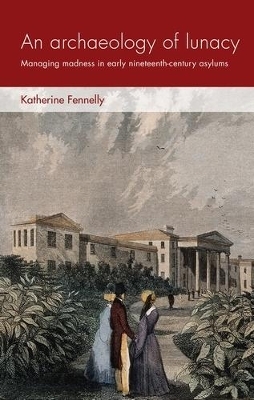
An Archaeology of Lunacy
Managing Madness in Early Nineteenth-Century Asylums
Seiten
2019
Manchester University Press (Verlag)
978-1-5261-2649-8 (ISBN)
Manchester University Press (Verlag)
978-1-5261-2649-8 (ISBN)
This is a materially focused exploration of the first wave of public asylum building in Britain and Ireland. Examining architecture and material culture, it proposes that the familiar asylum archetype, usually attributed to the Victorians, was in fact developed much earlier. -- .
An archaeology of lunacy is a materially focused exploration of the first wave of public asylum building in Britain and Ireland, which took place during the late-Georgian and early Victorian period. Examining architecture and material culture, the book proposes that the familiar asylum archetype, usually attributed to the Victorians, was in fact developed much earlier. It looks at the planning and construction of the first public asylums and assesses the extent to which popular ideas about reformed management practices for the insane were applied at ground level. Crucially, it moves beyond doctors and reformers, repopulating the asylum with the myriad characters that made up its everyday existence: keepers, clerks and patients. Contributing to archaeological scholarship on institutions of confinement, the book is aimed at academics, students and general readers interested in the material environment of the historic lunatic asylum. -- .
An archaeology of lunacy is a materially focused exploration of the first wave of public asylum building in Britain and Ireland, which took place during the late-Georgian and early Victorian period. Examining architecture and material culture, the book proposes that the familiar asylum archetype, usually attributed to the Victorians, was in fact developed much earlier. It looks at the planning and construction of the first public asylums and assesses the extent to which popular ideas about reformed management practices for the insane were applied at ground level. Crucially, it moves beyond doctors and reformers, repopulating the asylum with the myriad characters that made up its everyday existence: keepers, clerks and patients. Contributing to archaeological scholarship on institutions of confinement, the book is aimed at academics, students and general readers interested in the material environment of the historic lunatic asylum. -- .
Katherine Fennelly is Lecturer in Heritage at the University of Lincoln -- .
1 Introduction
2 Management
3 Administration
4 Movement
5 Conclusions
Index -- .
| Erscheinungsdatum | 25.08.2019 |
|---|---|
| Reihe/Serie | Social Archaeology and Material Worlds |
| Zusatzinfo | 6 Maps |
| Verlagsort | Manchester |
| Sprache | englisch |
| Maße | 156 x 234 mm |
| Gewicht | 458 g |
| Themenwelt | Geisteswissenschaften ► Archäologie |
| Studium ► Querschnittsbereiche ► Geschichte / Ethik der Medizin | |
| ISBN-10 | 1-5261-2649-4 / 1526126494 |
| ISBN-13 | 978-1-5261-2649-8 / 9781526126498 |
| Zustand | Neuware |
| Haben Sie eine Frage zum Produkt? |
Mehr entdecken
aus dem Bereich
aus dem Bereich
Die Geschichte eines Weltzentrums der Medizin von 1710 bis zur …
Buch | Softcover (2021)
Lehmanns Media (Verlag)
17,95 €
von der Antike bis zur Gegenwart
Buch | Softcover (2024)
C.H.Beck (Verlag)
12,00 €
Krankheitslehren, Irrwege, Behandlungsformen
Buch | Softcover (2024)
C.H.Beck (Verlag)
39,95 €


